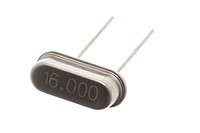
Photo from wikipedia
Surface acoustic wave (SAW) sensors are steadily paving the way to wider application areas. Their main benefit consisting in the possibility of wireless interrogation with the radio frequency interrogation signal… Click to show full abstract
Surface acoustic wave (SAW) sensors are steadily paving the way to wider application areas. Their main benefit consisting in the possibility of wireless interrogation with the radio frequency interrogation signal being the only energy source for the reradiated signal. This feature is getting more and more attractive with the growing demand in monitoring multiple industrial objects difficult to access by wired sensors in harsh environments. Among such wider applications, the possibility of making measurements of temperature, deformation, vibrations, and some other parameters at temperatures in the range of 300 °C–1000 °C look quite promising. This paper concentrates on specific features of the SAW resonator-based sensors operation at this temperature range. High-temperature influences the material choice and thus the properties of SAW resonators design peculiarities intended for use at high temperature. It is suggested that preferable designs should use synchronous resonators with relatively thick electrodes (10% of wavelength) based on Ir or Pt alloys while benefiting from the possibilities of specific designs that could reduce the negative impact of thick electrodes on the manufacturing in quantity. This solution benefits from lower resonance frequency scatter because of the automatic compensation of SAW velocity decrease due to electrode metallization ratio increase. This compensation originates from the resonance frequency increase that is related to the decrease of the Bragg bandwidth defined by the reflection. It is shown in modeling examples that the value of metallization ratio at which this compensation occurs is close to 65%–70%.
Journal Title: IEEE Transactions on Ultrasonics, Ferroelectrics, and Frequency Control
Year Published: 2018
Link to full text (if available)
Share on Social Media: Sign Up to like & get
recommendations!